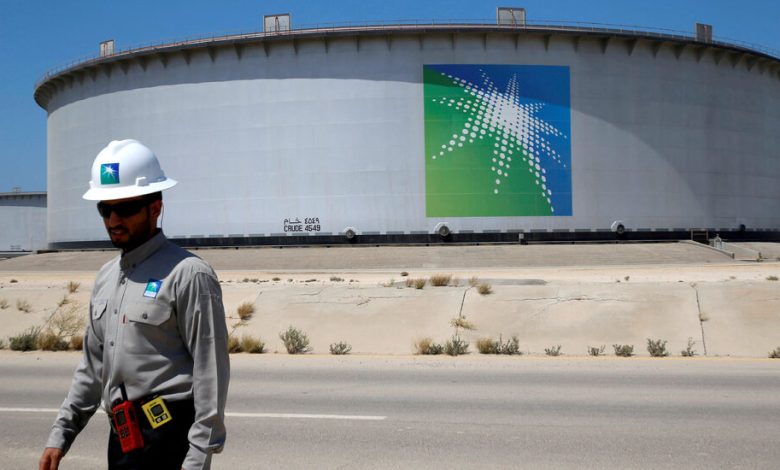Saudi Aramco Reports $30 Billion in Profit for Latest Quarter

The News
Saudi Aramco, the world’s largest energy company, on Monday reported a nearly 40 percent drop in profit for the second quarter, compared with a year ago, when high oil prices produced record earnings.
Despite the smaller profit, Aramco still made a lot of money: $30 billion for the April-June period, far more than the profits generated by other oil giants (Exxon Mobil made $7.9 billion and Shell $5 billion).

Aramco made $30 billion in profits last quarter, far more than rival oil giants.Credit…Ahmed Jadallah/Reuters
The Numbers: Profits that rise and fall with oil prices.
Major energy companies have been reporting reduced profits, largely because the price of oil has fallen since last year. In the second quarter, Aramco said, the average oil price was just under $79 a barrel, down from about $113 in the same period a year ago. Oil prices jumped after Russia’s invasion of Ukraine, and have slowly eased since then.
Despite the reduced earnings, Aramco reported a 12 percent increase in capital expenditures, to $10.5 billion, a category of spending that reflects investment in its business.
Notable: A bigger payout for shareholders.
Aramco made some news in its earnings announcement by promising to pay more to shareholders through a new dividend program. In addition to its base quarterly dividend of $19.5 billion, up 4 percent from a year earlier, the company said it would pay an additional dividend linked to the company’s performance. That will amount to just under $10 billion in the third quarter, with payouts continuing over the subsequent five quarters.
Aramco is owned mainly by the Saudi government, and the company’s earnings provide a major source of its financing.
Analysts at RBC Capital Markets, noting that Aramco was sitting on a lot of cash, described the added dividend as “the next logical step.”
Quotable: Investments necessary for “energy security.”
Amin H. Nasser, Aramco’s chief executive, stressed in a statement the importance of further investments in energy — fossil fuels as well as climate-friendly alternatives like “blue” ammonia, which is made with renewable power.
“Our mid- to long-term view remains unchanged. With a recovery anticipated in the broader global economy, along with increased activity in the aviation sector, ongoing investments in energy projects will be necessary to safeguard energy security,” Mr. Nasser said. “At the same time, we remain optimistic about the potential for new technologies to reduce our operational emissions, and our recent blue ammonia shipments to Asia highlight the growing market interest in the potential of alternative, lower-carbon energy solutions.”
What’s Next: Oil prices appear to be on an upswing.
After oil prices briefly exceeded $120 a barrel after the start of the war in Ukraine, they have generally declined. Although many Western countries have banned imports of Russian oil, India and China are now major importers of the crude, and this trade has helped stabilize markets.
But prices have been climbing notably since June. On Monday, Brent crude, the international benchmark, was at about $85 a barrel, and West Texas Intermediate about $82.
The reasons for the rise are many, but they include production cuts announced earlier in the year (and extended last week) by Saudi Arabia and Russia; more signs that the United States will avoid a recession as inflation eases; and rising concerns as the fighting in Ukraine spreads to the Black Sea, a trading route used by vessels carrying Russian crude.



